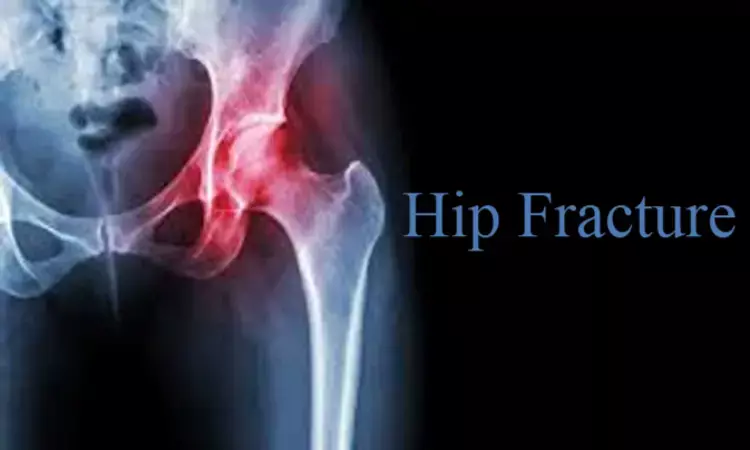- Home
- Medical news & Guidelines
- Anesthesiology
- Cardiology and CTVS
- Critical Care
- Dentistry
- Dermatology
- Diabetes and Endocrinology
- ENT
- Gastroenterology
- Medicine
- Nephrology
- Neurology
- Obstretics-Gynaecology
- Oncology
- Ophthalmology
- Orthopaedics
- Pediatrics-Neonatology
- Psychiatry
- Pulmonology
- Radiology
- Surgery
- Urology
- Laboratory Medicine
- Diet
- Nursing
- Paramedical
- Physiotherapy
- Health news
- Fact Check
- Bone Health Fact Check
- Brain Health Fact Check
- Cancer Related Fact Check
- Child Care Fact Check
- Dental and oral health fact check
- Diabetes and metabolic health fact check
- Diet and Nutrition Fact Check
- Eye and ENT Care Fact Check
- Fitness fact check
- Gut health fact check
- Heart health fact check
- Kidney health fact check
- Medical education fact check
- Men's health fact check
- Respiratory fact check
- Skin and hair care fact check
- Vaccine and Immunization fact check
- Women's health fact check
- AYUSH
- State News
- Andaman and Nicobar Islands
- Andhra Pradesh
- Arunachal Pradesh
- Assam
- Bihar
- Chandigarh
- Chattisgarh
- Dadra and Nagar Haveli
- Daman and Diu
- Delhi
- Goa
- Gujarat
- Haryana
- Himachal Pradesh
- Jammu & Kashmir
- Jharkhand
- Karnataka
- Kerala
- Ladakh
- Lakshadweep
- Madhya Pradesh
- Maharashtra
- Manipur
- Meghalaya
- Mizoram
- Nagaland
- Odisha
- Puducherry
- Punjab
- Rajasthan
- Sikkim
- Tamil Nadu
- Telangana
- Tripura
- Uttar Pradesh
- Uttrakhand
- West Bengal
- Medical Education
- Industry
Serial BMD test not beneficial for Identifying Hip Fracture risk: JAMA

According to a recent study, a second bone mineral density (BMD) assessment about three years after initial measurement does not improve discrimination beyond baseline BMD value alone for women who do and do not experience a subsequent hip fracture or major osteoporotic fracture.
Researchers have published their findings in JAMA Internal Medicine.
Carolyn J. Crandall and colleagues, from the University of California in Los Angeles, examined whether a second BMD measurement about three years after the initial assessment is associated with improved ability to estimate fracture risk.
This cohort study included 7,419 women from the Women's Health Initiative, with a mean follow-up of 12.1 years between 1993 and 2010. Data analysis for this observational study was conducted between May 2019 and December 2019. The main parameters that were assessed were major osteoporotic fracture (i.e., hip, clinical spine, forearm, or shoulder fracture), hip fracture, baseline BMD, and absolute change in BMD.
The findings revealed the following key facts.
- During the study follow-up, 139 women (1.9%) experienced hip fractures, and 732 women (9.9%) experienced a major osteoporotic fracture.
- It was noted while discriminating between women who experience hip fractures and those who do not, AU-ROC values were 0.71 (95% CI, 0.67-0.75) for baseline total hip BMD, 0.61 (95% CI, 0.56-0.65) for change in total hip BMD, and 0.73 (95% CI, 0.69-0.77) for the combination of baseline total hip BMD and change in total hip BMD.
- The femoral neck and lumbar spine BMD values had similar discrimination for hip fractures.
- Femoral neck and lumbar spine BMD values had similar ability to discriminate between women who experienced a major osteoporotic fracture and those who did not.
- There was no difference in associations between change in bone density and fracture risk by subgroup, including diabetes, age, race/ethnicity, body mass index, or baseline BMD T score.
Researchers suggested that as repeated bone mineral density (BMD) testing to screen for osteoporosis requires resources, it is very important for clinicians to know whether repeated BMD measurement (compared with baseline BMD measurement alone) improves the ability to discriminate between postmenopausal women who will and will not experience a fracture.
"Thus, our evidence suggests that repeated BMD testing three years after baseline BMD in postmenopausal women should not be routinely performed," the authors wrote.
Primary source: JAMA Internal Medicine
Dr Satabdi Saha (BDS, MDS) is a practicing pediatric dentist with a keen interest in new medical researches and updates. She has completed her BDS from North Bengal Dental College ,Darjeeling. Then she went on to secure an ALL INDIA NEET PG rank and completed her MDS from the first dental college in the country – Dr R. Ahmed Dental College and Hospital. She is currently attached to The Marwari Relief Society Hospital as a consultant along with private practice of 2 years. She has published scientific papers in national and international journals. Her strong passion of sharing knowledge with the medical fraternity has motivated her to be a part of Medical Dialogues.
Dr Kamal Kant Kohli-MBBS, DTCD- a chest specialist with more than 30 years of practice and a flair for writing clinical articles, Dr Kamal Kant Kohli joined Medical Dialogues as a Chief Editor of Medical News. Besides writing articles, as an editor, he proofreads and verifies all the medical content published on Medical Dialogues including those coming from journals, studies,medical conferences,guidelines etc. Email: drkohli@medicaldialogues.in. Contact no. 011-43720751


